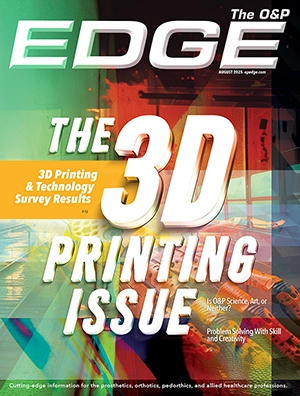
While muscles in the residual limb are the preferred source of control for bionic hands, with transhumeral amputations fewer muscles remain to command the prosthetic joints needed to restore the function of an arm and hand. A multidisciplinary team of surgeons and engineers has circumvented this problem by reconfiguring the residual limb and integrating sensors and a skeletal implant to connect with a prosthesis electrically and mechanically. By dissecting the peripheral nerves and redistributing them to new muscle targets used as biological amplifiers, the bionic prosthesis can access much more information so the user can command the prosthetic joints at will.

The research, published July 12, was led by Max Ortiz Catalan, PhD, founding director of the Center for Bionics and Pain Research (CBPR) in Sweden, head of neural prosthetics research at the Bionics Institute in Australia, and professor of bionics at Chalmers University of Technology in Sweden.
“In this article, we show that rewiring nerves to different muscle targets in a distributed and concurrent manner is not only possible but also conducive to improved prosthetic control. A key feature of our work is that we have the possibility to clinically implement more refined surgical procedures and embed sensors in the neuromuscular constructs at the time of the surgery, which we then connect to the electronic system of the prosthesis via an osseointegrated interface. AI [artificial intelligence] algorithms take care of the rest.”
“It is rewarding to see that our cutting-edge surgical and engineering innovation can provide such a high level of functionality for an individual with an arm amputation. This achievement is based on over 30 years of gradual development of the concept, in which I am proud to have contributed,” said Rickard Brånemark, MD, research affiliate at Massachusetts Institute of Technology, associate professor at Gothenburg University, CEO of Integrum, and a leading expert on osseointegration, who conducted the implantation of the interface.
The surgery took place at the Sahlgrenska University Hospital, Sweden, where CBPR is located. The neuromuscular reconstruction procedure was conducted by Paolo Sassu, MD, who also led the first hand transplantation performed in Scandinavia.
“The incredible journey we have undertaken together with the bionic engineers at CBPR has allowed us to combine new microsurgical techniques with sophisticated implanted electrodes that provide single-finger control of a prosthetic arm as well as sensory feedback. Patients who have suffered from an arm amputation might now see a brighter future,” said Sassu, who is presently working at the Istituto Ortopedico Rizzoli in Italy.
The journal article illustrated how the transferred nerves progressively connected to their new hosting muscles. Once the innervation process had advanced enough, the researchers connected them to the prosthesis so the patient could control every finger of a prosthetic hand. The researchers also demonstrated how the system responded in activities of the daily life and are currently in the process of further improving the controllability of the bionic hand.
The study, “Improved control of a prosthetic limb by surgically creating electro-neuromuscular constructs with implanted electrodes,” was published in Science Translational Medicine.
To watch videos of the research process and the participant using the prosthesis, visit the CBPR website.
Editor’s note: This story was adapted from materials provided by Chalmers University of Technology.



